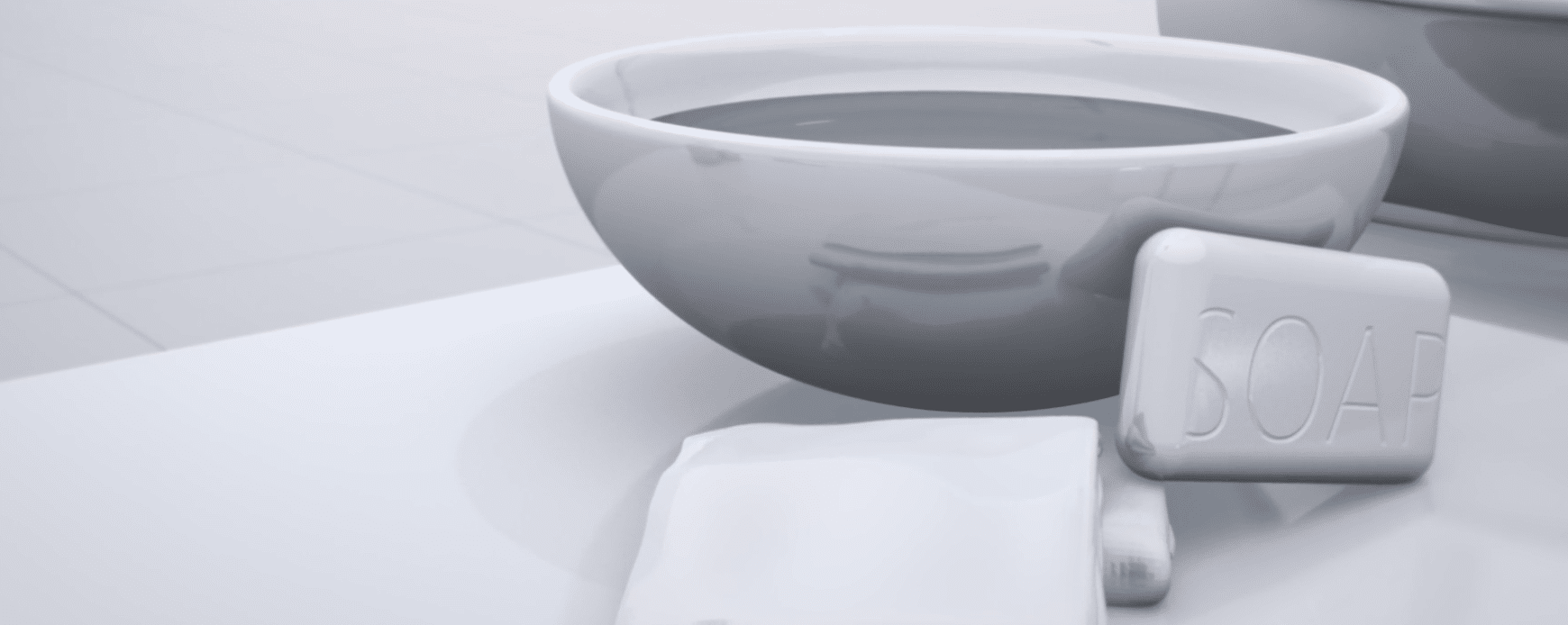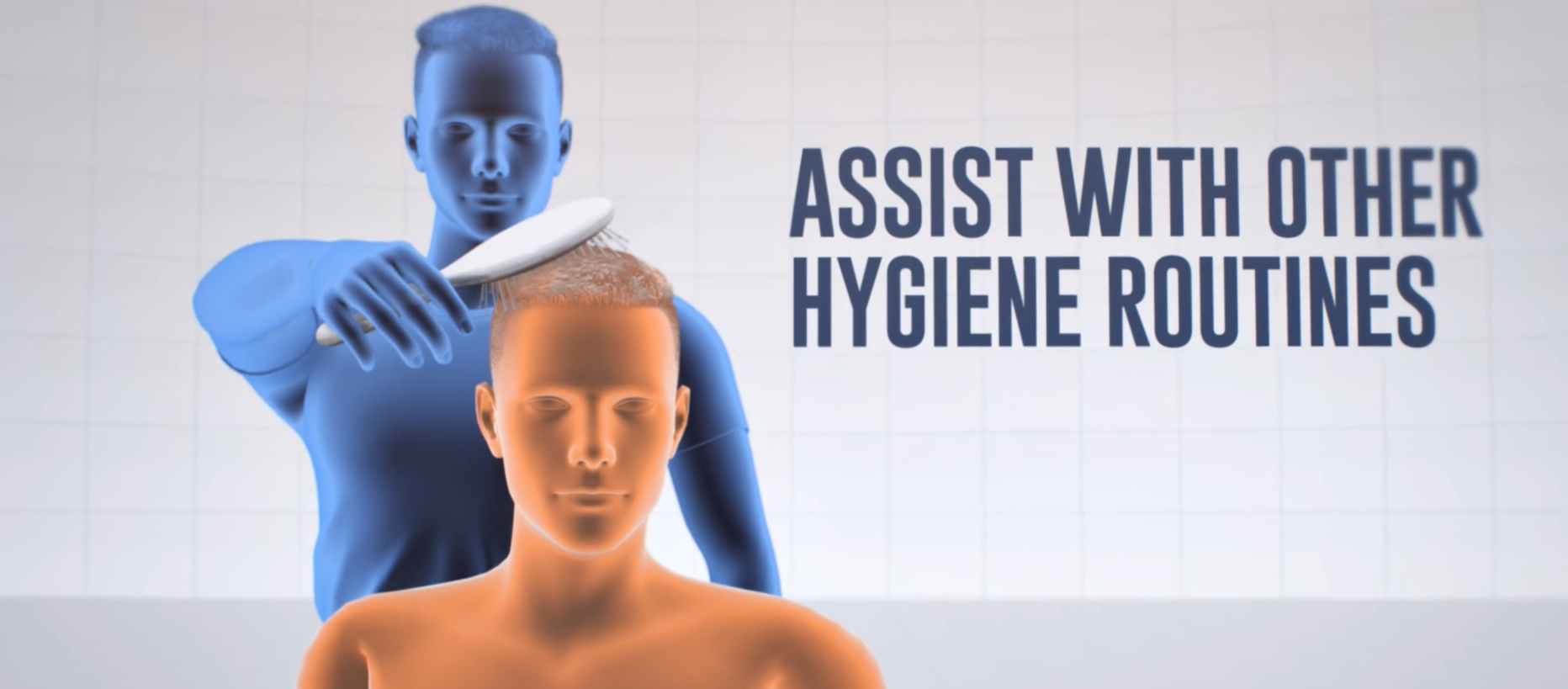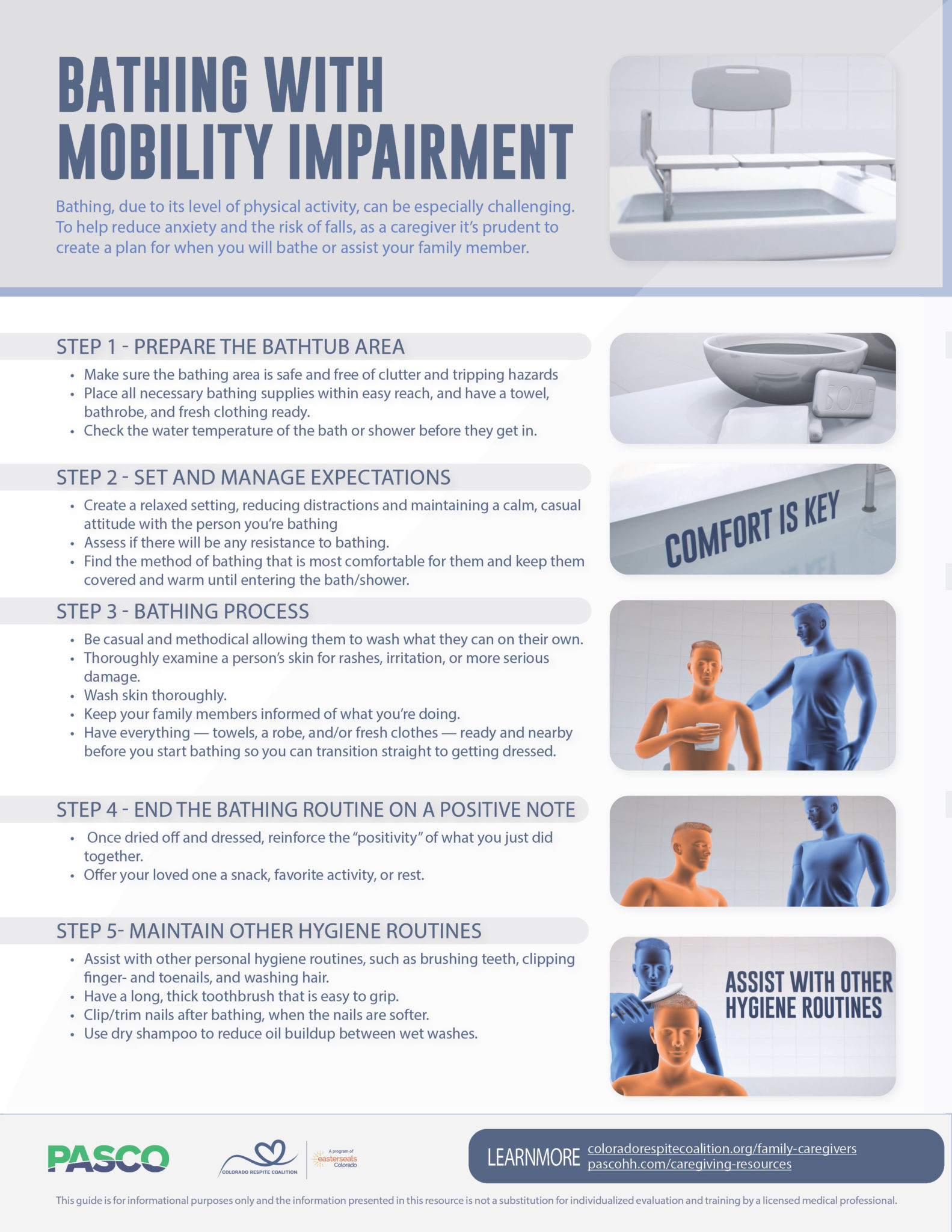Bathing, due to its level of physical activity, can be especially challenging. To help reduce anxiety and the risk of falls, as a caregiver it’s prudent to create a plan for when you will bathe or assist your family member.
Step 1 - Prepare the Bathtub Area
- Make sure the bathing area is safe and free of clutter and tripping hazards
- Place all necessary bathing supplies within easy reach, and have a towel, bathrobe, and fresh clothing ready.
- Check the water temperature of the bath or shower before they get in.

Step 2 - Set and Manage Expectations
- Create a relaxed setting, reducing distractions and maintaining a calm, casual attitude with the person you’re bathing
- Assess if there will be any resistance to bathing.
- Find the method of bathing that is most comfortable for them and keep them covered and warm until entering the bath/shower.

Step 3 - Bathing Process
- Be casual and methodical allowing them to wash what they can on their own.
- Thoroughly examine a person’s skin for rashes, irritation, or more serious damage.
- Wash skin thoroughly.
- Keep your family members informed of what you’re doing.
- Have everything — towels, a robe, and/or fresh clothes — ready and nearby before you start bathing so you can transition straight to getting dressed.

Step 4 - End the Bathing Routine on a Positive Note
- Once dried off and dressed, reinforce the “positivity” of what you just did together.
- Offer your loved one a snack, favorite activity, or rest.

Step 4 - Maintain Other Hygiene Routines
- Assist with other personal hygiene routines, such as brushing teeth, clipping finger- and toenails, and washing hair.
- Have a long, thick toothbrush that is easy to grip.
- Clip/trim nails after bathing, when the nails are softer.
- Use dry shampoo to reduce oil buildup between wet washes.

